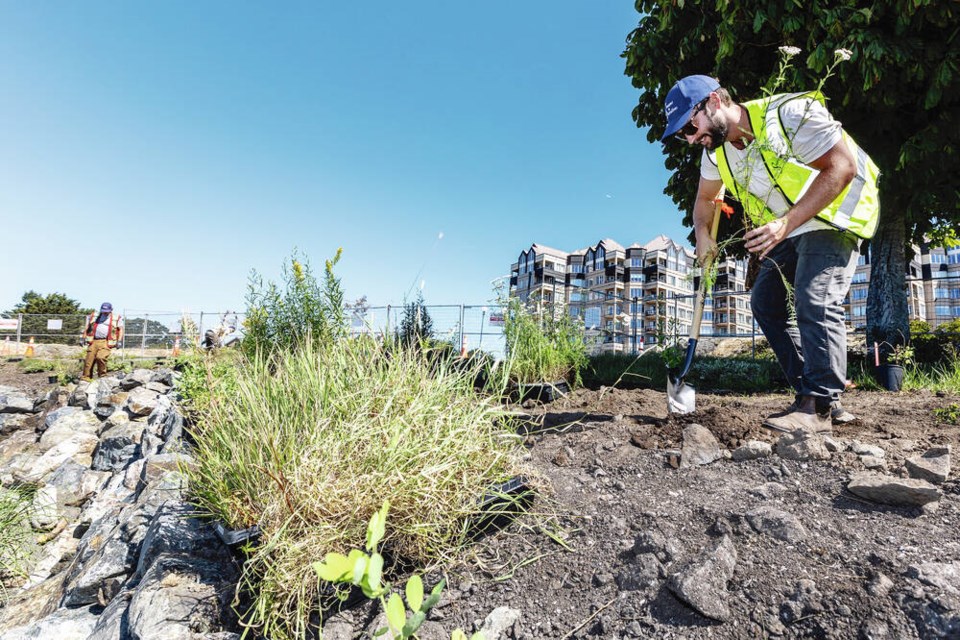The Peninsula Streams Society and City of Victoria staff have put the finishing touches on a two-year, $170,000 project that has already brought new life to the city’s harbour.
On Friday, crews were busy planting above the shoreline at Lime Bay, between Spinnakers Brewpub and the Victoria International Marina, the site of a rejuvenation project that has restored the marine habitat to the point it lured back surf smelt to spawn last fall.
Kyle Armstrong, executive director of the society, said when they saw the smelt, a native forage fish, coming back to spawn in the new gravel near the shore last year, it was a shot in the arm for the restoration effort.
“It was really cool last winter — we had smelt come back after taking those actions and it was really uplifting,” he said. “It was like if you make room for nature, it will come back.”
A few years ago, the harbour was considered one of the most polluted waterways in the country after decades of industrial use wreaked havoc on the environment, Armstrong said.
“But there’s been a huge recovery effort towards restoration and we’re starting to see results of that,” he said. “We’re starting to see killer whales come back to the harbour, elephant seals, endangered red abalone coming back, herring.”
The smelt are important prey for salmon, which in turn are prey for other marine life, including orcas, while fish eggs serve as food for shorebirds.
The beach-restoration project has been a partnership between the Peninsula Streams Society, the Songhees and Esquimalt First Nations and the City of Victoria. It’s a demonstration project for the Pacific Salmon Foundation and B.C. Stewardship Centre’s Resilient Coast for Salmon program, as well as a trial to see how the gravel and sand that’s been added moves throughout winter storms.
There have been contributions from industrial companies like Ralmax and the tourism industry through Destination Greater Victoria.
The cash and materials fueled the removal last year of debris, concrete and contaminated sediment, which was replaced with fish-friendly sand and gravel.
This summer, the group excavated the backshore to expand the beach with clean sands and sediment, which is now being planted.
The group added a pathway and a rock wall to secure the backshore areas.
Armstrong said one goal was to pay homage to the Songhees village that was once on the site and where the Lekwungen people once harvested food.
“This whole area used to be a much larger complex of beaches between Lime Bay and Mud Bay, which significantly got filled in and destroyed,” he said.
He noted when the beach was lost so was the spawning habitat for forage fish, and the native plant species that used to thrive on the shore.
The addition of natural materials and recreation of the flatter beach of the past will allow small watercraft to land again at Lime Bay, where it was once common for Lekwungen people to bring their canoes.
Armstrong said the project is a bit of a beachhead for the society on the harbour and he hopes to do more shoreline work around the area.
“The city has identified a number of shoreline projects, so we’d like to continue working with them on those projects and we’ll look to raise funds and work with other partners to deliver those projects,” he said.
The Lime Bay project will be turned over to the City of Victoria to be maintained through its parks department.
>>> To comment on this article, write a letter to the editor: [email protected]



